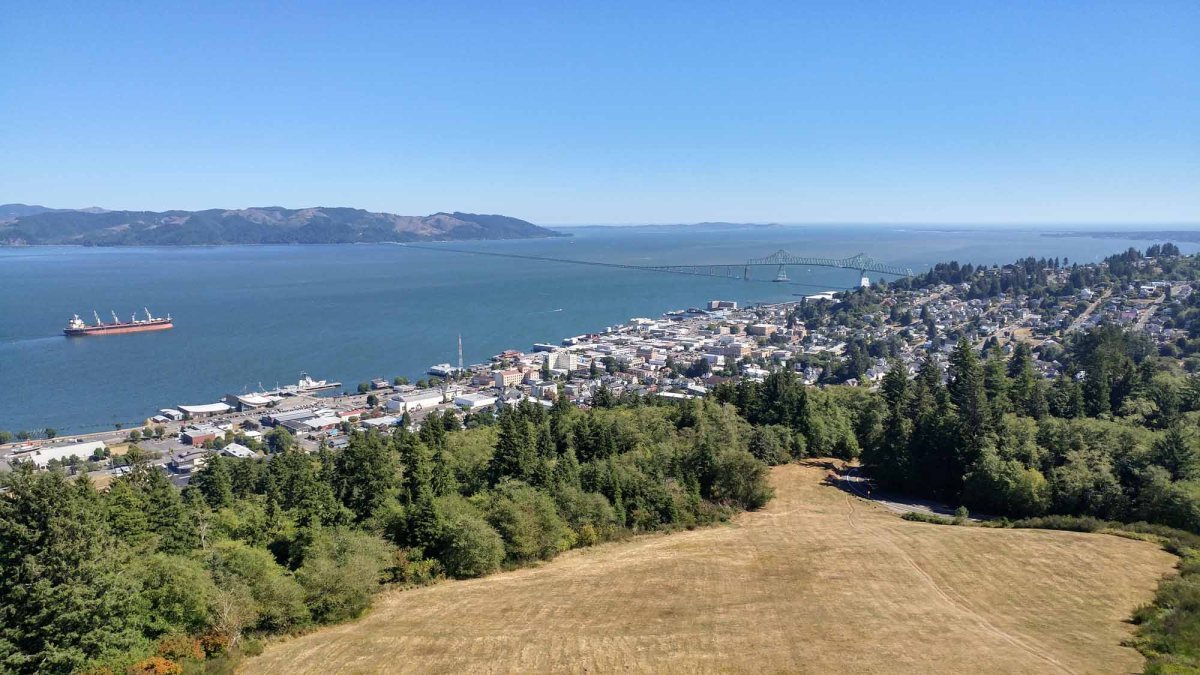Hidden Trading Posts Of Oregon’s Fort Astoria

Have you ever wondered about the hidden stories behind Fort Astoria in Oregon? This historic site, nestled along the Columbia River, holds secrets of early American trade and exploration. Established in 1811 by John Jacob Astor's Pacific Fur Company, Fort Astoria became the first American-owned settlement on the Pacific Coast. It played a crucial role in the fur trade, serving as a bustling hub for trappers and traders. The fort's strategic location made it a key player in the competition between British and American interests. Today, visitors can wander through the remnants of this once-thriving outpost, imagining the bustling activity that once filled its grounds. From the tales of daring explorers to the challenges of frontier life, Fort Astoria offers a glimpse into a pivotal chapter of American history. Whether you're a history buff or just curious, this site promises a fascinating journey back in time.
The Historical Significance of Fort Astoria
Fort Astoria, located in present-day Oregon, was a pivotal trading post in the early 19th century. Established by the Pacific Fur Company, it became a hub for fur traders and explorers. Let's uncover some hidden trading posts connected to this historic site.
- Fort Clatsop
Fort Clatsop served as the winter encampment for the Lewis and Clark Expedition. Situated near the mouth of the Columbia River, this site provided shelter and resources for the explorers. Today, visitors can explore a replica of the fort and learn about the expedition's challenges and triumphs.
- Fort Vancouver
Fort Vancouver was a major center for the Hudson's Bay Company, located across the Columbia River from Fort Astoria. This trading post played a crucial role in the fur trade and the development of the Pacific Northwest. The reconstructed fort offers a glimpse into the lives of traders and settlers during that era.
The Role of Native American Tribes
The success of Fort Astoria and its trading posts relied heavily on the cooperation and trade with Native American tribes. These tribes provided essential knowledge and resources to the fur traders.
- Chinook Point
Chinook Point, near the mouth of the Columbia River, was a significant trading location for the Chinook people. Known for their expert canoe-building skills, the Chinook facilitated trade between coastal and inland tribes. This site remains a testament to their influence in the region.
- Celilo Falls
Celilo Falls, located on the Columbia River, was a vital fishing and trading site for Native American tribes. The falls were a gathering place for tribes from across the region, who traded goods and shared cultural practices. Though the falls were submerged by a dam in the 1950s, their historical importance endures.
The Expansion of the Fur Trade
The fur trade expanded rapidly in the Pacific Northwest, with Fort Astoria at its center. This expansion led to the establishment of additional trading posts throughout the region.
- Fort Okanogan
Fort Okanogan, situated at the confluence of the Okanogan and Columbia Rivers, was one of the first American trading posts in the area. It served as a key location for trade with Native American tribes and other fur traders. The site now offers insights into the early days of the fur trade.
- Fort Nez Percés
Fort Nez Percés, also known as Fort Walla Walla, was another important trading post in the region. Located near the confluence of the Walla Walla and Columbia Rivers, it facilitated trade between the Hudson's Bay Company and local tribes. The fort's history highlights the complex interactions between traders and Indigenous peoples.
The Legacy of Fort Astoria
The legacy of Fort Astoria and its trading posts continues to shape the history and culture of the Pacific Northwest. These sites offer a window into the past, revealing the challenges and triumphs of early explorers and traders.
- Astoria Column
The Astoria Column stands as a monument to the region's rich history. Perched atop Coxcomb Hill, it offers panoramic views of the Columbia River and the surrounding landscape. The column's murals depict significant events in the area's history, including the establishment of Fort Astoria.
- Lewis and Clark National Historical Park
This park encompasses several sites related to the Lewis and Clark Expedition, including Fort Clatsop. Visitors can explore trails, exhibits, and reconstructed structures that bring the expedition's story to life. The park serves as a reminder of the enduring impact of these early explorers.
Discovering Oregon's Hidden Trading Posts
Exploring Oregon's hidden trading posts at Fort Astoria offers a glimpse into the past. These sites tell stories of early settlers, Native American tribes, and the fur trade that shaped the region. Walking through these historic locations, you can almost hear the bustling activity of traders exchanging goods and cultures. The Columbia River played a crucial role, serving as a highway for trade and communication. Visiting these sites today, you can appreciate the natural beauty that surrounds them, from lush forests to the mighty river itself. Each trading post has its own unique story, waiting to be uncovered by curious travelers. Whether you're a history buff or just love exploring new places, these hidden gems offer a rich experience. So next time you're in Oregon, take a detour to Fort Astoria and step back in time to discover the legacy of these trading posts.

